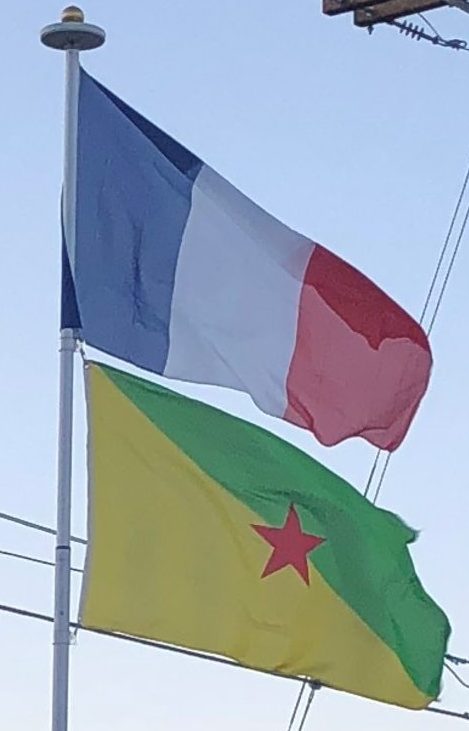Today we feature the flag of French Guiana, an Overseas Department of France.
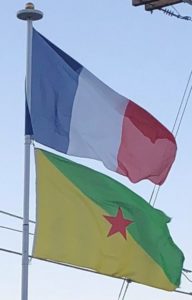
An overseas department is a department of France that is outside metropolitan or European, France. They have nearly the same political status as metropolitan departments, although they have special constitutional provisions that allow them greater autonomy and are excluded from certain domestic statistics, such as the unemployment rate.
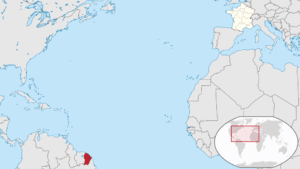
French Guiana is one of three outlier nations on the continent of South America in that they are not former colonies of Latin countries, specifically not Spanish or Portugeuse, but instead represent, from west to east, Guyana, the former British Guiana, Suriname, the former Dutch Guiana, and the remaining non-independent area in South America, French Guiana.
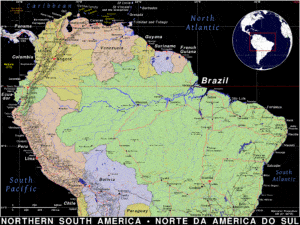
The area that is now called French Guiana was originally settled by a number of different native peoples, some of whom still live to this day deep in the largely undeveloped and probably not even completely explored southern interior. There are also remaining populations of Maroons, or the descendants of escaped slaves living in the interior forests.
The French presence in what is today French Guiana, or Guyane française in French, although it is officially called Guiana, or Guyane in French, has a long history. The first officially recorded presence occurred in 1503 but it wasn’t until the founding of Cayenne in 1643 to this day the departmental capital, that the French presence was durable.
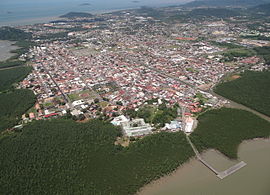
An earlier attempt at colonization and settlement in 1763 failed spectacularly with the death from tropical diseases of 10,000 of the original 12,000 settlers.
There was little economic activity in Guyane aside from the use of convicts to collect butterflies for collectors as well as for scientific study. Guyana was a slave colony as well as a convict settlement. Île du Diable, Devil’s Island,
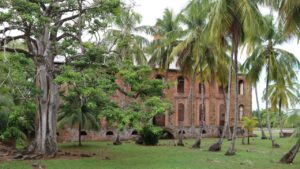
one of the grossly misnamed Îles du Salut, or Isles of Salvation,
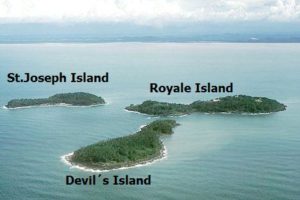
became infamous as one of the most feared and brutal of all prisons in the world. But the prison system wasn’t isolated to the three islands of the Isles of Salvation. The main prison camp was along the western border with Dutch Guiana, now known as Suriname. The islands were used to isolate the “worst of the worst” as well as for political prisoners who were housed on Devil’s Island itself. Île Royale allowed for the general population of the worst criminals of the penal colony to roam about in moderate freedom due to the difficulty of escape from the island.
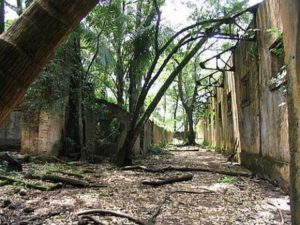
Île Saint-Joseph was for the worst of those criminals to be punished in solitary confinement in silence and for extra punishment in darkness. Conditions were so harsh, especially the presence of tropical diseases that would likely go untreated, that of the estimated 56,000 prisoners sent to the islands, only about 10% survived the experience. Those who survived their sentence enjoyed freedom but were never to be allowed to return to metropolitan France, instead being condemned to live the rest of their days on the mainland.
